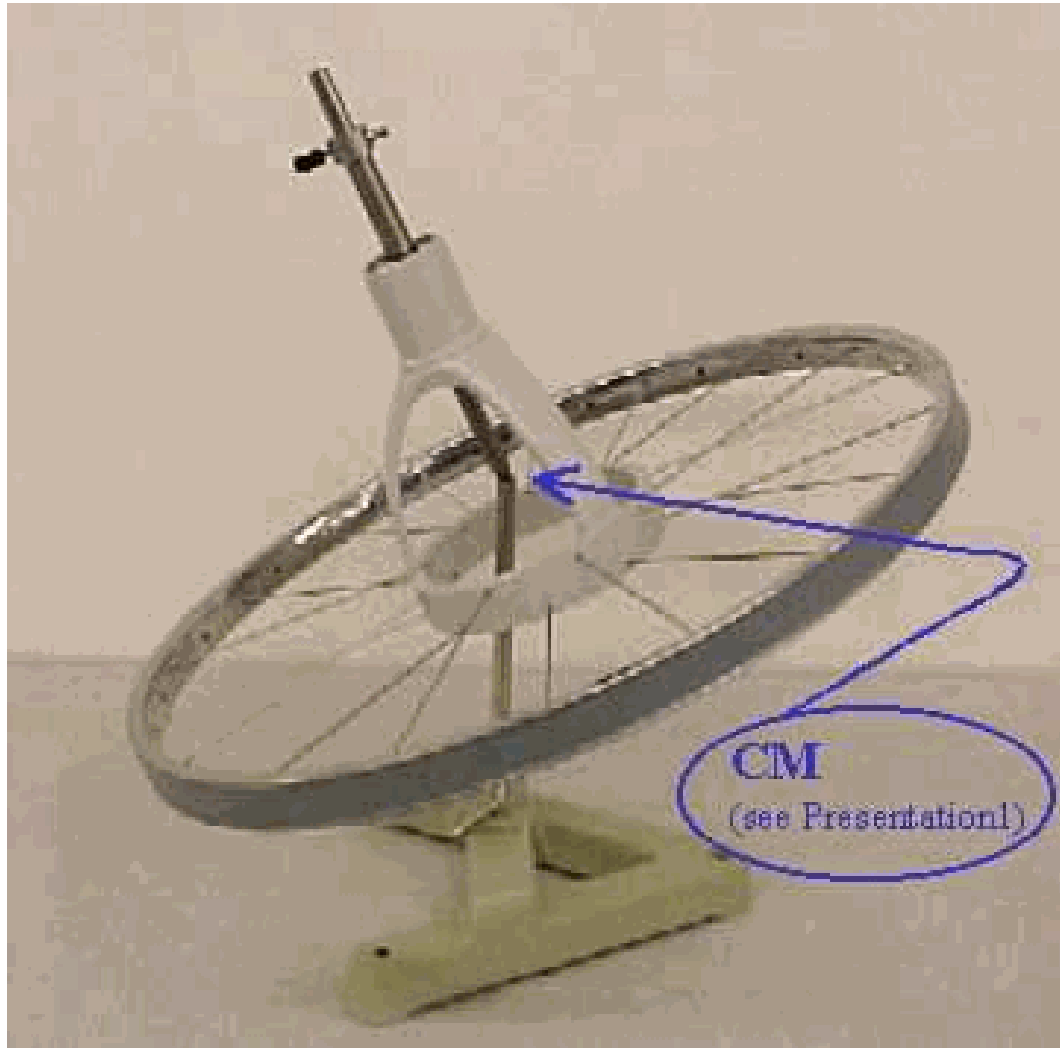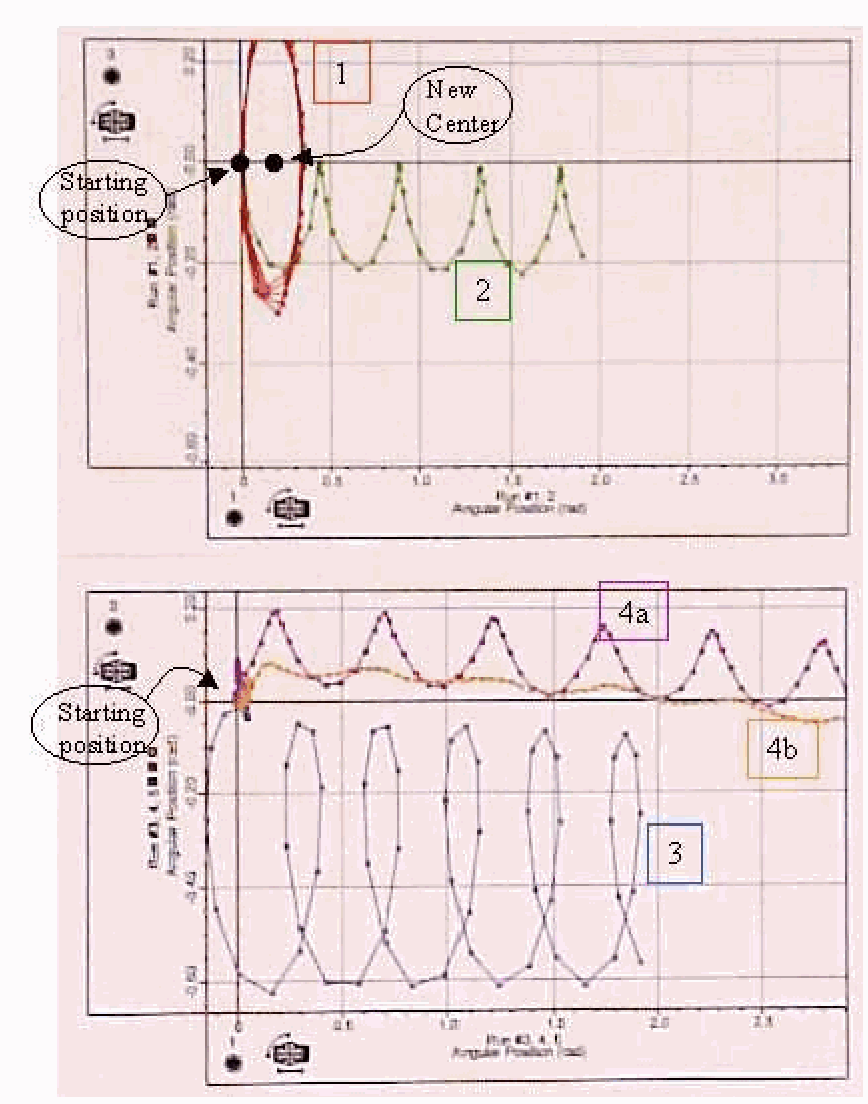04 Precession (2)#
Aim#
To show precession (and to show the validity of vector-addition)
Subjects#
1Q50 (Gyros)
Diagram#

Fig. 251 .#
Equipment#
Bicycle-wheel with handles.
2 pieces of rope.
Pair of scissors.
Presentation#
The wheel is supported by strings tied to both handles. The wheel is given a fast spin by hand. Now one of the supporting strings is cut. The wheel starts to precess about a vertical axis (while its own horizontal axis of spin slowly descends toward the vertical). As the spin of the wheel diminishes, the wheel precesses more rapidly.
Explanation#
Since angular momentum is a vector quantity that may be conveniently represented by a vector parallel to the axis of spin, the combination of two angular momenta may be treated by the parallelogram law. Thus, whenever a gyroscope is acted upon by a torque tending to produce rotation about an axis perpendicular to the axis of spin, the gyroscope will precess about a third axis perpendicular to the other two.

Fig. 252 .#
The spinning wheel has an angular momentum of \(I \omega_{0}\). This is represented by a vector parallel to the axis of spin (see Figure 252 a). When one of the strings is cut, then gravitational torque ( \(\mathrm{mgs}\) ) is added to the system (see Figure 252 b ). This torque tends to change \(I \omega_{0}\), so \(I \omega_{b}\) moves into the direction of \(m g s\) (see Figure 252 c).
It can be shown that the speed of precession \(\left(\omega_{p}\right)\) is given by \(\omega_{p}=\frac{m g s}{I \omega_{f}}\), so slowing down of \(\omega_{0}\) increases \(\omega_{0}\). The precession will also be more rapid by adding a weight to the unsupported handle.
Sources#
Sutton, Richard Manliffe, Demonstration experiments in Physics, pag. 79
